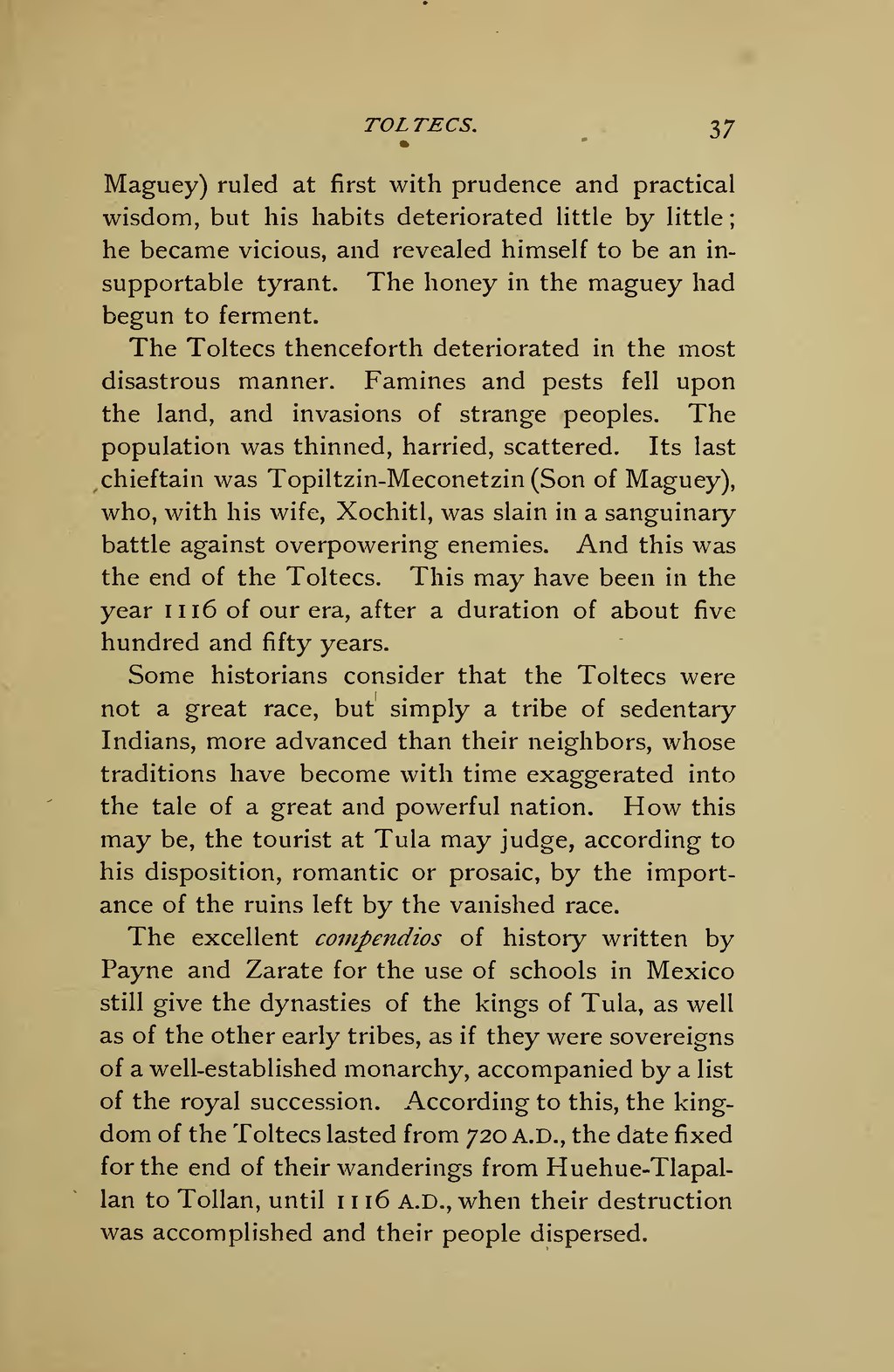Maguey) ruled at first with prudence and practical wisdom, but his habits deteriorated little by little; he became vicious, and revealed himself to be an insupportable tyrant. The honey in the maguey had begun to ferment.
The Toltecs thenceforth deteriorated in the most disastrous manner. Famines and pests fell upon the land, and invasions of strange peoples. The population was thinned, harried, scattered. Its last chieftain was Topiltzin-Meconetzin (Son of Maguey), who, with his wife, Xochitl, was slain in a sanguinary battle against overpowering enemies. And this was the end of the Toltecs. This may have been in the year 1116 of our era, after a duration of about five hundred and fifty years.
Some historians consider that the Toltecs were not a great race, but simply a tribe of sedentary Indians, more advanced than their neighbors, whose traditions have become with time exaggerated into the tale of a great and powerful nation. How this may be, the tourist at Tula may judge, according to his disposition, romantic or prosaic, by the importance of the ruins left by the vanished race.
The excellent compendios of history written by Payne and Zarate for the use of schools in Mexico still give the dynasties of the kings of Tula, as well as of the other early tribes, as if they were sovereigns of a well-established monarchy, accompanied by a list of the royal succession. According to this, the kingdom of the Toltecs lasted from 720 A.D., the date fixed for the end of their wanderings from Huehue-Tlapallan to Tollan, until 11 16 A.D., when their destruction was accomplished and their people dispersed.
